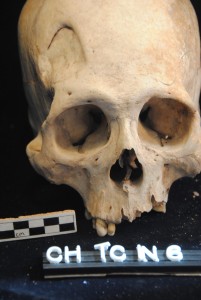All ancient roads lead to Rome – anthropologists find
New research into ancient Roman graveyards has revealed the secrets of who came to live in the centre of Imperial Rome and where they moved from.
Anthropologists have used isotope analysis of 2000-year-old skeletons to build a first ever picture of migration within the Roman Empire.

New research the secrets of ancient Roman graveyards
More than 100 skeletons exhumed from Roman cemeteries dating from the first century through the third century CE were examined by an international team of scientists led by Dr Janet Montgomery from the UK’s Durham University and Dr Kristina Kilgrove from the US-based University of West Florida.
The researchers found up to eight individuals who came from outside Rome, probably from North Africa and north of the Alps.
The individuals were mostly children and men; and their diets changed significantly as they travelled to Rome, adapting to the local staples – wheat and some legumes, meat and fish.
“In the end, there was one female skeleton, several male skeletons, and several children whose sex could not be determined that likely were not born at Rome,” Dr Killgrove said.
The researchers estimated that some 5 per cent of the million people living in imperial Rome were voluntary immigrants, as opposed to slaves
By analysing the oxygen, strontium, and carbon isotope ratios in the skeletons’ teeth they determined the geographical origin and diet.
The results provide a more granular picture of ancient migration patterns than we have seen before.
While the researchers said more context would be needed in the form of additional DNA and isotope analysis, the researchers pointed out that anyone relocating to the capital region would have had to alter their diet substantially, as local cuisine consisted heavily of foods made from wheat and bolstered with some fish, meat and legumes.
Despite the preliminary nature of the study, the researchers say that their initial isotope analysis can easily provide the first hard proof that migrants, on an individual level and during the specific time period, came to Rome.
Laurie Nowell
AMES Australia Senior Journalist












